I’ve been to Hell and back. And with 707 horsepower under the hood it didn’t take me long to get there.
Hell, Michigan seemed like the appropriate place to take a spin in the 2015 Dodge Charger SRT Hellcat – not just because of the kindred name but because the little town is gateway to some of the best driving roads within a couple 100 miles of Detroit. While there are plenty of flat, wide roads in the Motor City to test the Hellcat’s 0 to 60 prowess, we wanted to see how it handled something a lot more demanding.
For those who’ve somehow missed the headlines, the Dodge Charger SRT Hellcat – and its sibling, the Challenger SRT Hellcat – are the most powerful factory-built muscle cars ever to roll out of a Big Three assembly plant. They share a massive, 6.2-liter supercharged version of the familiar Hemi V-8 that makes a jaw-dropping 707 horsepower and 650 pound-feet of torque.
To put things into perspective, that’s enough to deliver supercar numbers, the Charger Hellcat hitting 60 in around 3.6 seconds. It can cut the tape at the quarter-mile mark in around 11 seconds flat, and Dodge claims it will top out at 204 miles per hour.
In an earlier drive of the Challenger Hellcat out near Portland we were pleasantly surprised to discover that the coupe model was more than just the classic, high-powered sled. Running along the Columbia River Gorge, then spending a few hours at Portland International Raceway, we found the two-door reasonably capable of turning corners – and using its big Brembo brakes to deliver nosebleed stops.
(To get TDB’s first official look at the 2016 Camaro, Click Here.)
There are some differences between the two cars, of course. To start with, the 4-door has, no surprise, a slightly longer wheelbase – at 120.4 inches — and weighs in around 4,575 pounds, or roughly 100 more than the Hellcat edition of the Challenger.
The four-door Charger is a bit softer sprung, a bit more prone to modest body roll. The emphasis is a little more on ride comfort, something that could actually make this something of a daily driver if you don’t mind the big gas bills. But you’ll still be able to flog it around a track or down a drag strip.
The Dodge Charger SRT Hellcat also has a few more comfort and convenience features, such as power-up windows. Both models share the same two-level keys. There’s a black one to hand the valet or someone you might not trust with all that raw muscle. (They’ll still have access to 500 ponies.) Save the full-on red key for yourself.
The good news is that both Hellcat models allow you to switch between comfort, sport and track modes – adjusting the variable dampers and other performance settings — depending on how and where you want to lay rubber. And scrub off some of the tread you almost certainly will if you’re driving one of these beasts.
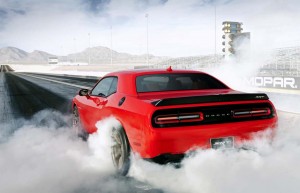
The Charger shares its supercharged 6.2-liter V-8 with the slightly lighter, shorter Challenger Hellcat.
Even for those familiar with muscle cars, the raw power the throttle unleashes can come as a surprise. It takes a few minutes to get used to modulating the pedal. Until then, you can expect to let out a series of chirps and squeals – and maybe a few complaints from passengers unexpectedly tossed to and fro – especially if the rear 275/40-series Pirelli P Zeros haven’t warmed up yet.
Of course, once you’re comfortable with the beast, that’ll be part of the thrill. And to boost the adrenaline factor even more, there’s that unmistakably guttural exhaust note. You’ll think that a NASCAR driver made a wrong turn at the track as one of these cars screams by.
Both Hellcat models share the same powertrain – making them the Dodge brand’s first models to adopt supercharging. The 6.2-liter engine shares its basic dimensions with the less powerful SRT version, but in Hellcat form it adds such upgrades as a forged-steel crankshaft with induction-hardened bearing surfaces.
Other modifications include high-strength, forged-alloy pistons and powder-forged connecting rods with high-load-capacity bushings and diamond-like-carbon-coated piston pins. The face of the 2015 Charger Hellcat edition has been modified to handle the extra breathing and cooling requirements of that supercharged V-8, as well. One of the more interesting details is the intake that replaces the inner foglights found on less extreme versions of the Charger and Challenger.
(Dodge Hellcat orders bust the bank. For more, Click Here.)
The 8-speed automatic transmission, meanwhile, has been beefed up to handle the extra torque while also trimming shift times to as little as 100 milliseconds, depending upon the gear. To further keep you planted, the electronic limited slip differential found on other Charger variants has been replaced by a mechanical asymmetric limited slip diff.
That said, you need to keep both hands on the wheel if you plan on driving this hellion hard. Even with the tires suitably warm, the tail will snap out on you if you’re overly aggressive, particularly on slicker pavement. But they’re also quick to get back in line if you massage, rather than manhandle, the steering wheel.
Dodge has taken a low-key approach to the design of the two Hellcat models. There’s no big chrome nameplate, just a pair of surprisingly subtle Hellcat icons on each front fender.
Among the most obvious visual cues, there’s a larger, power-bulge aluminum hood, with a dedicated cold-air intake and dual air extractors to pull heat from the engine compartment while also reducing air turbulence.
Aerodynamics and cooling have led to a number of revisions to the Charger Hellcat design, including a redesigned front fascia and grille, as well as the integrated front splitter. At the back, a special fascia and valence highlight the 4-inch exhaust tips.
Inside, as with the Challenger version, the 2015 Dodge Charger Hellcat also features an array of high-tech systems, including an optional 900-watt audio package, the Uconnect infotainment system, voice texting, 3D navigation and an optional WiFi hotspot.
Don’t expect to be texting much behind the wheel. And even for those in back, it could get a little difficult to use an iPad if the driver is working the throttle even somewhat aggressively.
That said, you could almost get away with calling the Charger “practical,” and for $64,990 – about $2,300 more than for the Challenger Hellcat – you’re getting supercar power at a relatively mainstream price.
How many buyers are there for a 707-horsepower domestic sedan? Well, the market for muscle cars has proven surprisingly robust and was gaining share even when gas was nudging $4 a gallon. So, while the Dodge Charger SRT Hellcat isn’t likely to be the brand’s best-seller, we expect there will be a fair number of shoppers who want to have king-of-the-hill bragging rights when they pull up to a stoplight.
(Muscle car sales surging. Click Here for the latest news.)

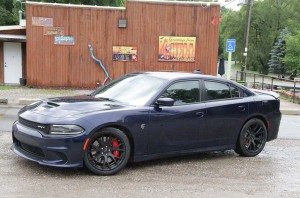
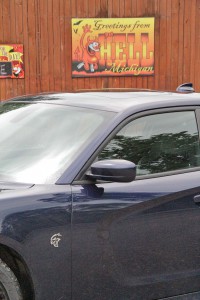
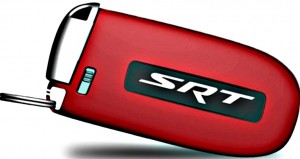
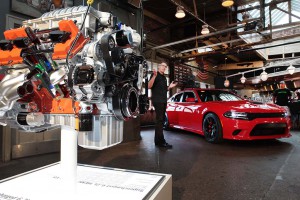
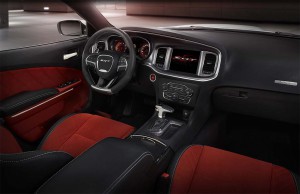
I’d go with the Challenger hellcat if I were in the market for this type of car but I can see some folks buying the Charger as a pseudo family vehicle. One thing Chrysler/Dodge need to work on is reduced vehicle weight. These two cars should be in the 3500 lb. range fully decked out – if not lighter. This would not only improve mpg but also handling and acceleration.